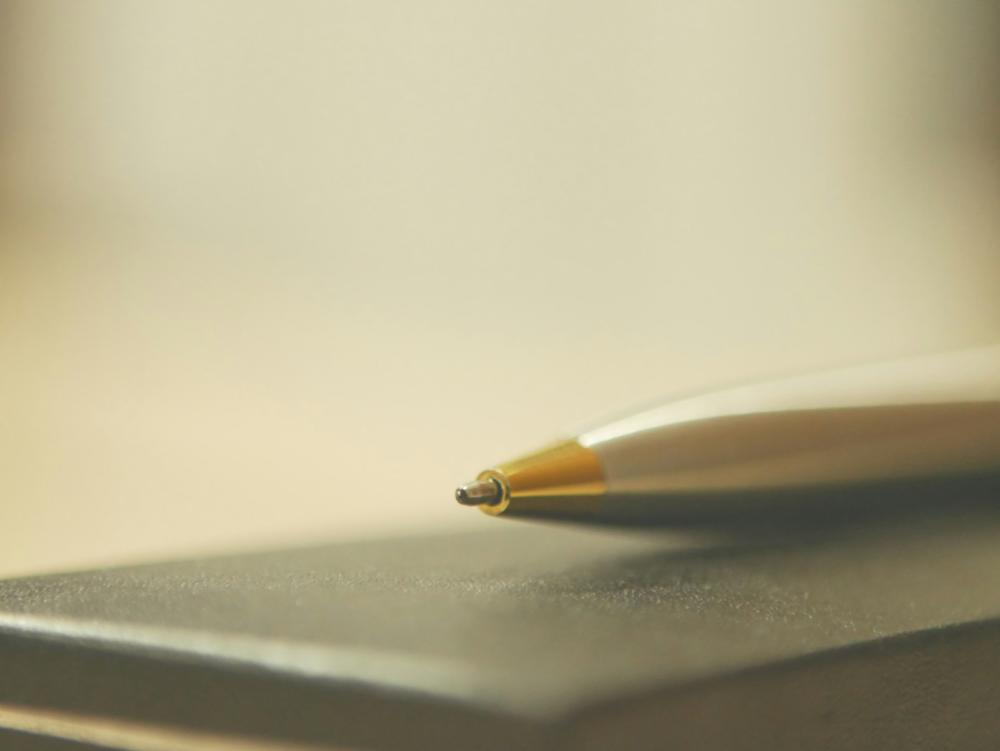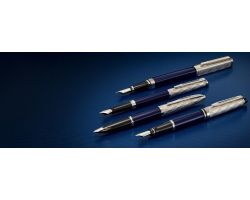Ballpoint pens have become a staple in homes, offices, and schools worldwide, appreciated for their reliability, convenience, and smooth writing experience. While they are now ubiquitous, the invention of the ballpoint pen was a revolutionary moment in the history of writing instruments.
This blog delves into the origins, evolution, and impact of ballpoint pens, offering insights into their development and how they shaped modern writing.
When were ballpoint pens invented?
The first patent for a ballpoint pen was filed in 1888 by John J. Loud. However, László Bíró’s design in 1938 revolutionised writing with the modern ballpoint pen.
Key Takeaways
-
Ballpoint pens were first patented in 1888 but became practical with László Bíró’s design in 1938.
-
Their quick-drying ink and smooth mechanism revolutionised writing tools.
-
Modern pens incorporate eco-friendly materials and customisable options, blending tradition with innovation.
-
Ballpoint pens continue to be indispensable tools in homes, offices, and businesses worldwide.
Let's get to know about the history of the ballpoint pen, invented the ballpoint pen, and more in detail below.
The Invention of the Ballpoint Pen: History of the ballpoint pen

The Early Days of Writing Instruments
Before the invention of ballpoint pens, people relied on dip pens, fountain pens, and quills. These instruments, while functional, had limitations, including ink leakage, smudging, and the need for frequent refilling.
The First Attempts at Ballpoint Pens
The concept of a pen that used a ball to distribute ink dates back to the late 19th century. In 1888, John J. Loud, an American leather tanner, patented the first design for a ballpoint pen. His invention aimed to write on leather but was too coarse for everyday writing on paper.
The Breakthrough: László Bíró
The true father of the modern ballpoint pen is László Bíró, a Hungarian journalist. Frustrated by the smudging and inefficiency of fountain pens, Bíró teamed up with his brother György, a chemist, to develop a pen that used quick-drying ink and a ball-bearing mechanism. In 1938, they patented the first functional ballpoint pen, revolutionising writing technology.
How Ballpoint Pens Work

The Ball-and-Socket Mechanism
The innovation lies in the pen’s design: a small rotating ball at the tip dispenses ink onto the paper. The ball fits snugly in a socket, ensuring a smooth flow of ink while preventing leakage.
Quick-Drying Ink
Unlike fountain pens, ballpoint pens use viscous, oil-based ink that dries quickly. This reduces smudging and makes them ideal for fast-paced writing.
Keep in mind that ballpoints are different than rollerball pens. I have shared major differences between rollerball vs ballpoint pens for those who don’t know about it already.
The Global Popularity of Ballpoint Pens
World War II and the Rise of Ballpoint Pens
During World War II, the British government adopted ballpoint pens for their pilots. Unlike fountain pens, which leaked at high altitudes, ballpoint pens functioned flawlessly. This practical advantage boosted their global popularity.
Commercial Success
In the 1940s, the Bíró brothers licensed their patent to Marcel Bich, the founder of Bic, a pen company that perfected the ballpoint pen. Bic introduced affordable, reliable pens, making them accessible to the masses. Bic’s ballpoint pens remain a global phenomenon to this day.
Why Ballpoint Pens Became a Writing Revolution
Convenience
Ballpoint pens are ready to use straight out of the box. There’s no need for refilling, which was a major drawback of earlier writing instruments.
Versatility
From signing contracts to doodling in notebooks, ballpoint pens cater to various needs. Their durable design ensures they work on multiple surfaces.
Cost-Effectiveness
Mass production has made ballpoint pens affordable for everyone, from students to professionals.
Durability
The robust design ensures a long lifespan, making ballpoint pens a reliable choice for everyday use.
The Evolution of Ballpoint Pens
Classic Ballpoint Pens
The original designs were simple and functional, focusing on smooth ink flow and durability.
Modern Innovations
Today’s ballpoint pens come with advanced features:
-
Ergonomic grips for comfort during extended use.
-
Sleek, stylish designs for a professional look.
-
Environmentally friendly options made from recycled materials.
Discover eco-friendly pens that combine innovation with sustainability.
At Promo Store, you can get such branded pens and many other products like branded colouring sets.
Different Types of Ballpoint Pens
Standard Ballpoint Pens
These are everyday pens designed for general writing tasks. Affordable and reliable, they’re a staple in homes and offices.
Retractable Ballpoint Pens
With a click mechanism to extend and retract the tip, these pens are convenient for on-the-go use.
Customised Ballpoint Pens
Perfect for promotional purposes, these pens can be personalised with logos, names, or designs.
The Role of Ballpoint Pens in Modern Business
Promotional Tools
Customised ballpoint pens are one of the most popular corporate gifts. They’re practical, cost-effective, and serve as constant reminders of your brand.
Corporate Identity
A branded pen with a sleek design reflects professionalism and attention to detail, enhancing your company’s image.
Everyday Office Use
From signing documents to jotting down ideas, ballpoint pens remain indispensable in workplaces.
If you sign the documents on a regular basis, I have recently discussed what is the best ink colour for professional documents. You must check that out for sure.
Frequently Asked Questions
1. When were ballpoint pens first invented?
The first patent for a ballpoint pen was filed by John J. Loud in 1888. However, the modern ballpoint pen was developed by László Bíró in 1938.
2. Why are ballpoint pens so popular?
Ballpoint pens are favoured for their convenience, durability, and affordability. Their quick-drying ink and versatility make them ideal for everyday use.
3. Are ballpoint pens environmentally friendly?
Many modern ballpoint pens are made from recycled materials or are refillable, reducing their environmental impact.
Conclusion
The invention of the ballpoint pen marked a turning point in the history of writing instruments. From John J. Loud’s initial concept to László Bíró’s revolutionary design, the ballpoint pen has evolved into an essential tool for everyday life.
Its practicality, affordability, and versatility have cemented its place in homes, schools, and workplaces across the globe.







